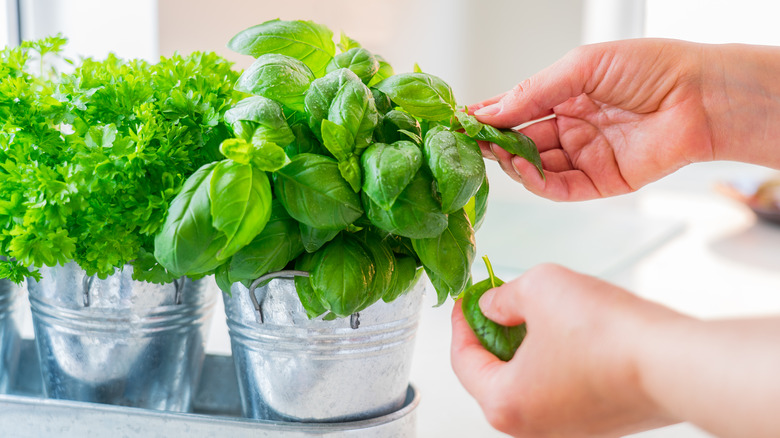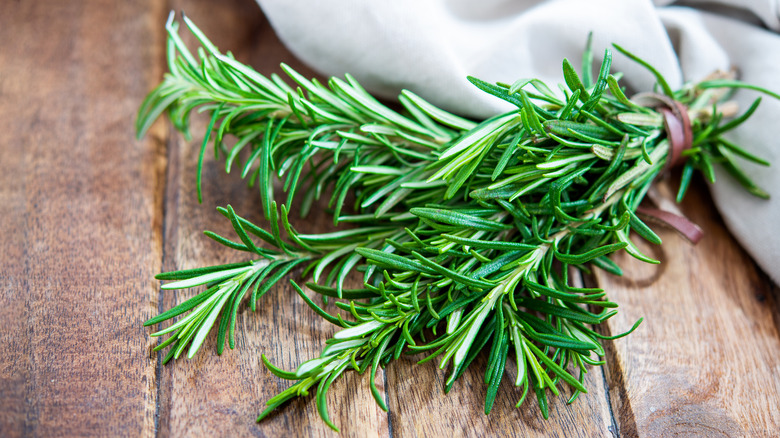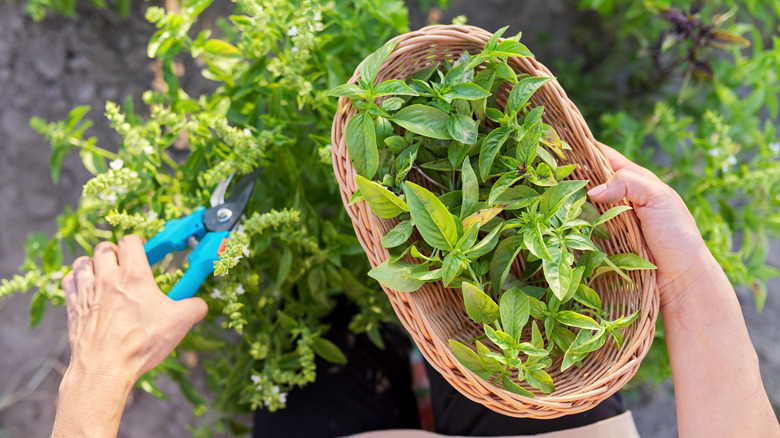Soft Herbs Vs. Hard Herbs: What's The Difference?
Fresh herbs are a surefire way to boost flavor in any dish. They can be used sparingly, such as in a garnish at the end of cooking, or more heavily as an added flavor throughout the making of a dish. Herbs date back thousands of years to as early as 3,000 B.C., according to Penn State University, and have since shaped regional cuisines around the world. These days, fresh herbs, especially locally sourced ones, are more popular than ever, with plenty of restaurants growing their own plants on-site, says the GoodLife Report. Plus, consumers' overall interest in home gardening has expanded, with Reuters reporting that seed companies saw a major rise in demand during the COVID-19 pandemic.
The term "herb" is extremely general, but the hundreds of plants in the category can be categorized in one of two ways: hard or soft. Though both types of herbs can be used to enhance recipes, they have distinct differences — including how each should be utilized in your cooking.
What are hard herbs?
Generally, hard herbs are more durable plants and are added to dishes toward the beginning of the cooking process, rather than at the end. According to Vegetables.co.nz, hard herbs tend to retain their flavor even when cooked for long periods. Additionally, their hardier texture means they don't fall apart so easily when incorporated into a sauce or stew that simmers for several hours. Hard herbs actually taste better when cooked, Bob's Red Mill reports, as heat allows their flavors to gently infuse food without overbearing it.
Common examples of hard herbs include rosemary, bay leaves, sage, and thyme. When in doubt about whether or not an herb in your fridge is hard or not, pay attention to its physical appearance: If it has woodier stems and tougher leaves, it's likely hard. These herbs can grow any time of year, but they can also last through tougher weather, such as in the colder months.
What are soft herbs?
Soft herbs, as their name suggests, have a more delicate texture than hard herbs. They are not meant for long-term cooking and instead work best when added to a dish toward the end of the cooking process, says Vegetables.co.nz. Examples include basil, parsley, and dill. And then there's oregano, the exception. Confusingly, this ingredient is often included in the soft herb family, but it actually behaves more like a hard herb. According to Jamie Oliver's website, oregano has a bold flavor that can withstand heat for long periods. That's why you can taste it so well in Italian dishes like marinara sauce.
You can become familiar with the different properties of hard and soft herbs by growing them at home, which Good Housekeeping says is relatively easy. Plus, storing herbs is a breeze. If yours still have their stems, it's best to put them in water and store them at room temperature. Otherwise, you can choose the cleanest-looking leaves, then place them in a plastic bag or container and store them in your refrigerator's crisper drawer.


